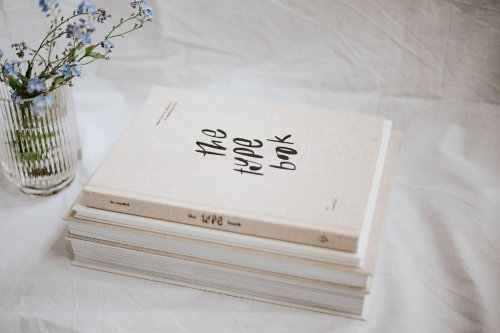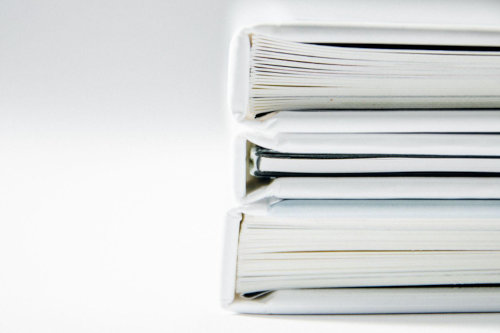When you first start writing, self-publishing books is something that can feel far away. You might be thinking about ebooks and having your book available on Amazon, but if you want to make some serious money from your book then you need to be thinking about how to get it printed.

There are many reasons why you might want to do this yourself: maybe you have an audience for your work already; or maybe you just want the control of publishing exactly how you want it; or maybe it feels like a fun project for yourself.
But whatever your reason for wanting to self-publish a print book here’s what we recommend:
What is Print on Demand (POD)?
Print on Demand (POD) is a printing technology that allows you to print your book one copy at a time. It’s also sometimes called digital printing, or print on demand.
Print on Demand is cheaper than offset printing because it uses less paper and ink, and there are no setup costs. In other words, the more books you order in a “print run,” the lower the per-book cost becomes.
1. Pick a profitable niche
Pick a profitable niche. A lot of people tend to go for the biggest niches, but this can be a huge mistake unless you have an extremely large audience and resources at your disposal. Instead, pick something that’s small and profitable. We recommend eBooks over print books because they’re typically cheaper to produce, but if you want to print your book instead then make sure it returns enough profit per unit sold so that you can make back the cost of publishing it within 2-3 months time.
Research the competition. Researching competitive products is one of the most important things you can do before creating something new. You need to know how well established competitors are doing so that you don’t create something better than theirs (which happens all too often). If someone else has already done it better than yours then there’s no point in making yours at all!
Choose niches with high demand for their products (and low competition). The best way we’ve found success with choosing niche markets is by looking at existing successful businesses who are already making money from what we want; this gives us insight into what kind of advertising would work best within our chosen industry as well as how much profit might be made from such ventures.
2. Calculate Your Costs Before You Publish
Before you publish your print book, you’ll need to do a cost analysis of the expenses involved. This will help you determine whether or not it is possible for you to self-publish your book. The following are things that may cost money:
- Printing costs
- Editing costs
- Cover design costs
- Formatting costs (if hiring someone else) or formatting software (if doing it yourself)
- Marketing costs – this depends on the amount of marketing work done by yourself and/or others; many people include their own marketing efforts as part of their overall publishing budget so they can keep track of what they spend on marketing more easily.
3. Sell it at the right price
The best way to find out if you’re pricing your book just right is through a calculator that tells you how many units are needed in order for the project to break even. Pricing can be tricky, but there are a few things you can do to make sure it’s done well:
- Make sure the price is worth someone’s time. This means taking into account how much value they’ll get from reading your book and what other books are available at similar prices or with similar content. You don’t want them comparing what they could buy on Amazon with another option that is equally attractive—for example, by offering free shipping on all purchases over $25!
- Don’t price yourself too high or too low (but don’t go crazy). The goal here isn’t just making money; rather, it’s selling books while still making a profit so that this whole process will be worthwhile in the long run!
4. Think about Shipping Costs
It’s important to remember that shipping can be a big expense. If you’re only selling your book online, then shipping costs aren’t an issue, but if you plan on shipping books by mail or courier, they could quickly add up. You will have to consider the weight of your book and its packaging in order to estimate a cost-effective rate.
Many authors choose to have their books printed overseas because it is cheaper than printing them domestically. However, most book manufacturers won’t ship international orders unless they are large enough for economical transportation by air freight or ocean vessel (which can run upwards of $1000 per pallet). This means that if you want your books shipped overseas, you may need thousands of copies available at once in order for those shipments to be worth their weight in gold (or whatever currency).
If this sounds like too much work for your first attempt at self-publishing a print book, contact Paradigm Print to learn more about book printing in Australia. They can help guide you through the process–from layout design through to printing.
5. Creating a Print Book Cover
A strong cover is the first impression of your book. It’s what people see when they are searching online and decide to buy your book or not, so you want to make sure that it looks professional.
You want to include these elements in your print book cover:
- Text (your name and the title)
- Your photo or an illustration of yourself
- A quote from a reviewer or customer who has read and enjoyed the book.

6. Design the book cover to convert readers into buyers
When self-publishing a print book, you’ll need to design the cover.
You have many options here: you can create your own cover, hire a freelancer or agency to do it for you, or buy one from a stock image site like Shutterstock. We recommend using a professional designer who specializes in book covers because they know what works and what doesn’t when it comes to marketing books. They will help guide you through the process of creating an effective cover that appeals to your target audience and conveys the mood or feel of your book without being overly complex or busy.
7. Package and price your book accordingly
In order to package and price your book, it’s important to understand the target audience you’re going after. If possible, do some research on what similar books in the same genre cost (or sold for) when they were published. This can help give you an idea of what a reasonable price point is for your book.
Be sure to take into account the quality of your book and cover as well—after all, these factors will be what entices readers to buy or not. You want them to feel like they’re getting their money’s worth!
8. Have it professionally edited
Editing is the single most important step in the self-publishing process.
Editing can be done by yourself or by a professional, but it’s vital to hire someone familiar with the process to make sure your book is as error-free and polished as possible before you publish it. Editing will improve the quality of your book and help you sell more copies. It’s also an investment worth making—editing services are quite affordable, especially when compared with having to order multiple print runs because something went wrong during printing (or worse, after printing).
9. Publishing the Book Yourself
Get a print on demand service to publish your book online. There are many of them out there. Make sure that you have a good cover design that represents your brand/message well – especially for a self-published book, it will be the first thing potential customers see when they are browsing through options on Amazon or other platforms.
Conclusion
The book publishing industry is exploding. With the advent of self-publishing, anyone can publish their own book and make themselves a star. While it is important to know what steps you need to take before you publish your first novel or nonfiction book, there are some basic things that every person who wants to self-publish should know about their books: from design to distribution.